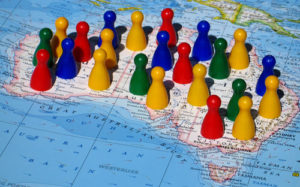If you’re a regular reader of my blog you’ll know I take a keen interest in demographics.
After all, demographic changes are a major driver of our property markets.
For example, those suburbs that are gentrifying are likely to outperform with regards to capital growth, and those where the population is ageing are likely to languish.
Interestingly the proportion of Australia’s population aged 65 years and over has increased in 2016, continuing a trend of the last two decades, according to the latest figures released by the Australian Bureau of Statistics (ABS).
ABS Demography Director Beidar Cho said that the percentage of the population aged 65 years and over has increased from 12.0 per cent in 1996 to 15.3 per cent in 2016.
“Over the last 20 years, there was a decrease in both the traditional working age population (from 66.6 to 65.9 per cent) and the proportion of children (21.4 to 18.8 per cent),” said Ms Cho.
In the states and territories, differences in age structure are largely due to migration as people move for economic, lifestyle and family reasons.
“In 2016, Tasmania is our oldest state or territory with a median age of 42 years, while the Northern Territory is the youngest with a median age of 33 years,” said Ms Cho.
“Tasmania and South Australia have the highest proportions of older people and the lowest proportions of both children and working age population.
“The Territories have the lowest proportions of older people and the highest proportions of working age population. The Northern Territory also has the highest proportion of children, followed by Queensland.”
Stay clear of these areas…
Now I know that some “commentators” have been suggesting to invest in Hobart or Adelaide because they’re lovely places to live and they’re “such good value” at present and must catch up.
But in my mind, the ageing population of both these cities is just another reason to look elsewhere.
By the way…
Look how fast we’re growing… 
Overall, Australia’s population grew by 337,800 people (1.4 per cent) to reach 24.1 million by the end of June 2016.
Net overseas migration added 182,200 people to the population (2 per cent higher than the previous year), and accounted for 54 per cent of Australia’s total population growth.
Natural increase contributed 155,700 additional people to Australia’s population, made up of 315,500 births (2.6 per cent higher than the previous year) and 159,900 deaths (2.6 per cent higher).
Over the year, net overseas migration was the major contributor to population change in New South Wales, Victoria and South Australia, whilst natural increase was the major contributor in all other states and territories.
Population growth by state and territory in 2015-16
| State/Territory | Population June 2016 |
Growth from June 2015 | % Growth from June 2015 |
| New South Wales | 7,725,884 | 105,585 | 1.39% |
| Victoria | 6,068,042 | 123,131 | 2.07% |
| Queensland | 4,844,473 | 64,659 | 1.35% |
| South Australia | 1,708,183 | 9,262 | 0.55% |
| Western Australia | 2,617,172 | 27,137 | 1.05% |
| Tasmania | 519,128 | 2,471 | 0.48% |
| Northern Territory | 244,880 | 534 | 0.22% |
| Australian Capital Territory | 396,141 | 5,020 | 1.28% |
| AUSTRALIA | 24,127,159 | 337,821 | 1.42% |
Source: ABS
| Percentage of Total Population – 30 June 2016 | |||||||||
|
|
|||||||||
|
New South Wales
|
Victoria
|
Queensland
|
South Australia
|
Western Australia
|
Tasmania
|
Northern Territory
|
Australian Capital Territory
|
Australia
|
|
|
|
|||||||||
|
0 to 14 years
|
18.7%
|
18.4%
|
19.7%
|
17.6%
|
19.2%
|
18.1%
|
22.0%
|
19.0%
|
18.8%
|
|
15 to 64 years
|
65.4%
|
66.5%
|
65.6%
|
64.6%
|
67.3%
|
63.1%
|
70.8%
|
68.5%
|
65.9%
|
|
65 plus years
|
15.9%
|
15.1%
|
14.7%
|
17.8%
|
13.5%
|
18.8%
|
7.3%
|
12.5%
|
15.3%
|
|
|
|||||||||

No comments:
Post a Comment